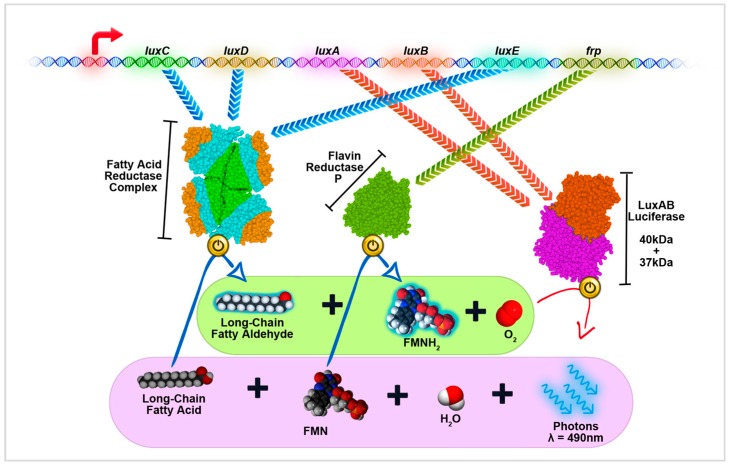Figure 2.
Schematic of a self-contained Lux operon system. The lux operon usually contains five different genes: luxC, luxD, luxA, luxB, and luxE. These five genes constitute the wildtype version of lux operon that can be found in Photorhabdus luminescens; this figure shows the modified version of lux operon that contains an additional frp gene for better operational efficiency when expressed in certain organisms. luxA and luxB code two subunits for dimeric LuxAB luciferase; luxC, luxD, and luxE code relative enzymes, which can form a dodecamer protein complex to produce fatty aldehyde substrate for LuxAB; and frp gene codes the Flavin reductase P that can be used to shift the natural cellular balance between FMN and FMNH2. In the presence of oxygen, LuxAB oxidizes fatty aldehyde and FMNH2 to generate cyan luminescence (λ = 490 nm). The oxidized products, fatty acid and FMN, can be recycled to re-form substrates. The continuous run of Lux system only requires the supplies of ATP, NADPH, and oxygen, so it is self-contained and able to constantly produce luminescence as long as the host cell is alive.

